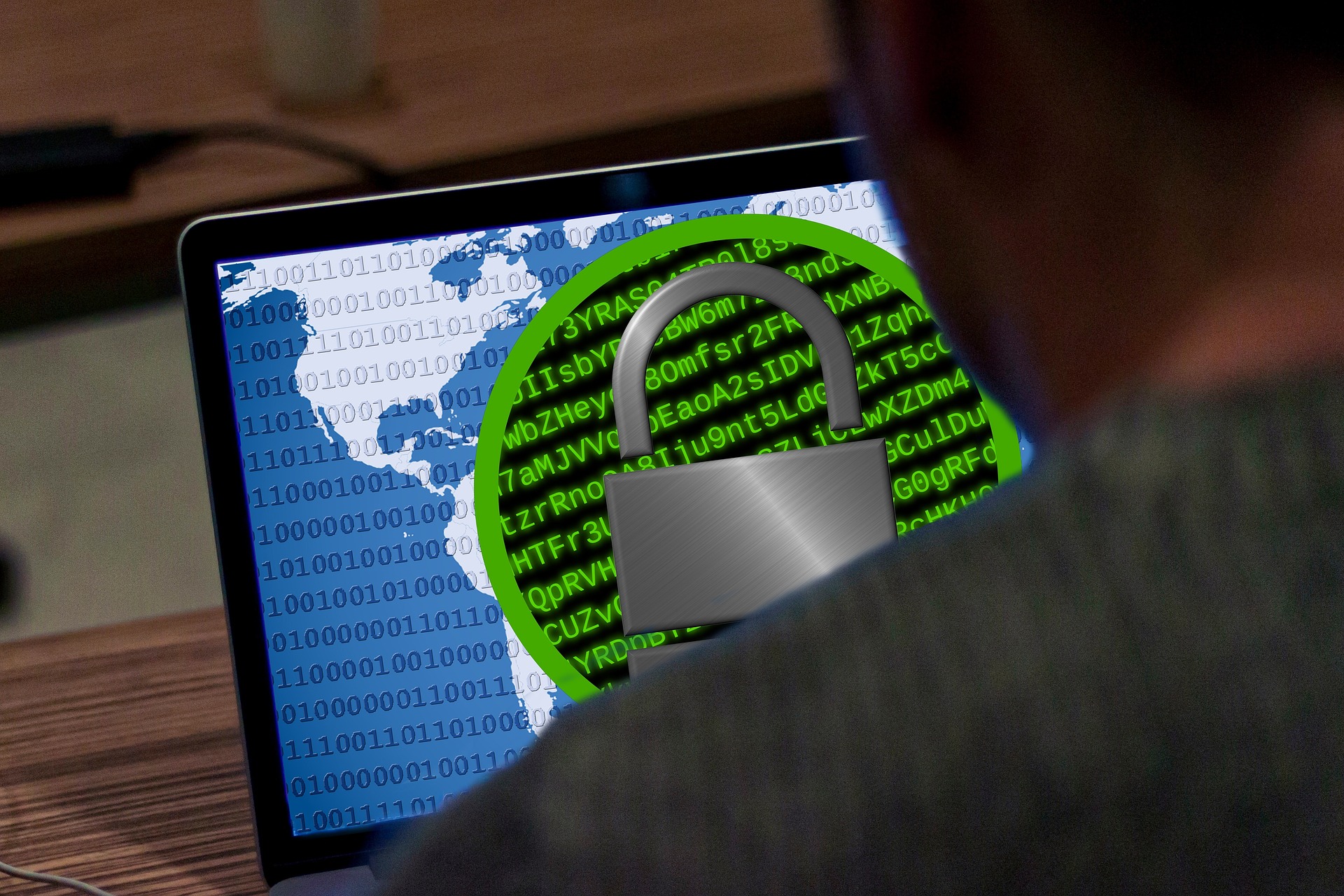Ransomware attacks are one of the most dangerous and fast-growing threats in today’s digital world. These attacks can silently take control of your data, lock it behind unbreakable encryption, and demand large sums of money to restore access. The damage isn’t just financial—ransomware can disrupt entire businesses, compromise personal information, and cause long-term data loss.
What makes ransomware especially dangerous is how quickly it spreads and how quietly it can begin. Often, users don’t realize anything is wrong until their files are already encrypted and a ransom message appears. That’s why early detection is critical. Spotting the warning signs—even small ones—can give you a vital chance to stop the attack before it spreads too far.
In this article, we’ll explore how ransomware works, what early warning signs to look for, and which free tools can help you detect an attack in its early stages. We’ll also share simple, preventive tips to reduce your risk—all explained in a beginner-friendly way. Whether you’re a casual computer user or managing a small website, this guide will help you stay one step ahead of ransomware threats.
What Is Ransomware?
Ransomware is a type of malicious software (malware) that locks or encrypts your files, making them completely inaccessible. Once your files are taken hostage, the attacker demands a ransom—usually in cryptocurrency like Bitcoin—in exchange for a decryption key that may or may not work. Until you pay (or find another way), you can’t open or use your own documents, photos, or system data.
Here’s how it typically works: ransomware often enters your system through infected email attachments, fake software updates, or harmful websites. Once inside, it silently scans your device, encrypts important files, and leaves behind a ransom note demanding payment. Sometimes the malware even spreads across entire networks, locking up multiple computers at once.
Real-world examples show just how serious ransomware can be. The WannaCry attack in 2017 affected hundreds of thousands of computers worldwide, including hospitals and businesses. Another, called LockBit, continues to target companies by stealing and encrypting sensitive data. But ransomware doesn’t just affect big organizations—individual users and small websites are also easy targets if they’re not protected.
Why Early Detection Matters
Ransomware can move fast—often encrypting thousands of files in just a few minutes. By the time most victims realize something is wrong, their data is already locked, and a ransom demand is staring them in the face. That’s why early detection is so important. The sooner you spot unusual activity, the better your chances of stopping the attack before it spreads and causes serious damage.
If you can detect a ransomware attack in its early stages, you may be able to prevent full system encryption altogether. For example, noticing a sudden slowdown, strange file behavior, or suspicious network activity can give you the chance to disconnect your device from the internet and run a security scan. Acting quickly could protect most of your data and save you from having to deal with a full-scale crisis.
Early detection doesn’t just protect your files—it also saves time, money, and stress. Recovering from a ransomware attack can take days or even weeks. You may lose important work, personal memories, or even customer trust if your website or business is affected. Spotting the attack early reduces recovery time and cost, helping you avoid the worst-case scenario. In short, staying alert pays off.
Early Warning Signs of a Ransomware Attack
1. Slower System Performance
One of the first signs of a ransomware attack is that your device suddenly starts running slower than usual. While occasional slowness can happen due to background updates or too many open programs, ransomware-related lag is often more persistent and unexplained. This happens because the malicious software is secretly working in the background—encrypting your files, scanning your folders, or connecting to remote servers to spread the attack.
Unlike normal slowness, this type of performance drop might affect specific actions, like opening files, saving documents, or navigating folders. If you notice your device freezing, processing slowly, or taking longer than usual to respond—especially when you haven’t changed anything recently—it’s worth investigating. Sometimes, the slowness starts just before more obvious signs of the ransomware attack appear, giving you a narrow window to react.
Running a quick antivirus scan, checking for unfamiliar programs in your task manager, or disconnecting from the internet can help you identify and stop potential issues before it’s too late. While not every slowdown is a sign of danger, unexpected lag—especially when combined with other signs—should always be taken seriously.
2. Unknown or Suspicious Files Appearing
Ransomware often leaves behind unusual files during its early stages. These files may look strange, have odd names, or carry uncommon extensions like .locked, .crypted, or .enc. If you suddenly see documents you didn’t create or folders filled with files that don’t belong, that’s a major red flag. The ransomware may be testing encryption on a few files before launching a full attack.
In some cases, you may also find duplicate files or versions of your original files with new extensions or hidden status. These suspicious changes are designed to confuse users and disrupt normal workflows, but they can be helpful signs that something harmful is happening in the background.
Unlike accidental downloads or random clutter, these ransomware-related files often appear quickly and in multiple places at once. If you find them and don’t recognize their origin, avoid opening them. Instead, disconnect your device from the internet and run a deep malware scan using a trusted antivirus tool. Spotting these files early can help you stop the attack before it spreads and encrypts everything.
3. Antivirus or Security Software Disabled
One of the sneakiest signs of a ransomware attack is when your antivirus or security software suddenly stops working. Hackers know that security programs are designed to block threats, so many ransomware types attempt to shut them down first. If you notice that your antivirus has been turned off, your firewall is disabled, or you’re getting strange error messages when trying to run scans, take it seriously.
This type of disruption doesn’t usually happen on its own. Most security tools run automatically and don’t randomly stop without user input. If they do, it might mean something else is controlling them—like malware already working in the background.
Even more worrying is when your system won’t let you turn your antivirus back on or reinstall it. That’s a strong indication that ransomware or another malicious program is actively trying to take over. If you notice this, immediately disconnect from the internet and seek help from a trusted cybersecurity tool or expert. Acting quickly can stop the ransomware from completing its attack.
4. Unusual Network Activity
Ransomware often needs to communicate with remote servers to receive instructions or send stolen data. That’s why one early warning sign is unusual network activity—even when you’re not actively using the internet. If your internet suddenly slows down, your router lights are constantly blinking, or your device shows signs of high data use without explanation, something suspicious may be happening.
Sometimes, infected computers start sending or receiving data to unknown locations. You may not notice this right away, but a simple check using free network monitoring tools (like GlassWire or NetLimiter) can reveal if something odd is using your bandwidth. Spikes in network traffic, especially from unfamiliar apps or during idle hours, should raise a red flag.
Ransomware may also attempt to spread across a local network by communicating with other devices. So, if all your devices start acting up at the same time, it’s possible that malware is trying to infect more systems. Unplugging from the network and scanning your device can help contain the issue before it spreads too far.
5. Locked Files or Pop-Up Messages
As ransomware progresses, one of the clearest signs is that your files suddenly stop opening. You might click on a document or photo and get an error message, or the file might appear with a strange icon or name. This often means the file has already been encrypted and is no longer usable without a decryption key.
Sometimes, you’ll see a ransom note pop up on your screen. This message might claim to be from a government agency or a hacker group, telling you your data has been locked and demanding payment—usually in cryptocurrency—to unlock it. The message may look official or threatening, trying to scare you into paying quickly.
At this stage, the attack is already in progress. But if the pop-up appears for only one folder or your device still responds normally in other areas, you may still have time to stop the full encryption. Immediately disconnect from Wi-Fi or unplug your network cable, and don’t click any links in the message. Running an offline malware scan can sometimes isolate the ransomware before it finishes its work.
How to Respond If You See Signs of a Ransomware Attack
If you suspect your device might be infected with ransomware, quick and careful action is critical to limit the damage. The very first step is to disconnect from the internet immediately. Unplug your network cable or turn off Wi-Fi. This stops the ransomware from spreading further, either to other files, other devices, or external servers.
Next, avoid opening, clicking, or renaming any suspicious files or messages. Ransomware often disguises itself as a harmless document or alert. Interacting with these files can trigger the encryption process or help the malware dig deeper into your system.
Then, run a full security scan using trusted antivirus or anti-malware tools. Free, reputable options like Malwarebytes or Microsoft Defender can help detect and isolate the infection. If your antivirus software has been disabled, try using a portable scanner from a USB stick or boot into safe mode.
Conclusion
Ransomware attacks continue to rise, and they don’t just affect big companies—anyone with a computer or connected device can become a target. That’s why early detection is not just helpful; it’s essential. Spotting the warning signs—like slower system performance, strange files, or disabled antivirus software—can make all the difference in stopping an attack before it takes over.
By staying alert and knowing what to look for, you give yourself a chance to act fast, protect your data, and avoid the stress and cost of recovery. Best of all, the tools and steps needed to detect and prevent ransomware can be free and beginner-friendly.
Cybersecurity doesn’t have to be complicated. With a little awareness and a few smart habits, you can stay one step ahead of ransomware threats and keep your digital life safe.


